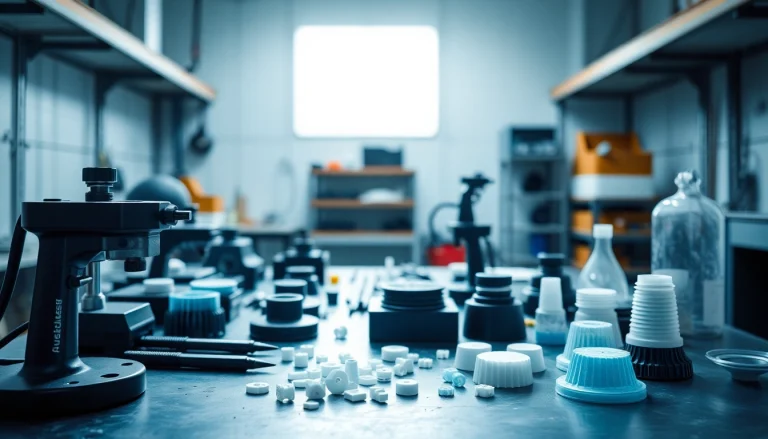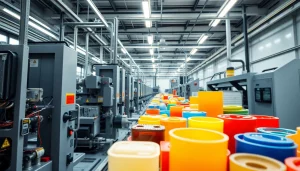Understanding Blow Moulded Plastic Parts
In the realm of modern manufacturing, blow moulded plastic parts have become increasingly significant. This innovative technique allows for the formation of hollow plastic components that are utilized in a myriad of applications across various industries. This article delves into the fundamentals of blow moulded plastic parts, the variety of processes involved, the materials used, and the wide-reaching advantages and applications of this production method.
What are Blow Moulded Plastic Parts?
Blow moulded plastic parts are hollow plastic components created through a manufacturing process where air is blown into a heated parison (a plastic tube) that expands and takes the shape of the mould. This technique is exceptionally efficient for producing large quantities of uniform parts with consistent thickness and optimal surface finish. Common products manufactured using this method include bottles, containers, and numerous automotive and industrial components.
Types of Blow Moulding Processes
There are mainly three types of blow moulding processes:
- Extrusion Blow Moulding (EBM): This process begins with the extrusion of a parison, which is then positioned into a mould where air pressure is applied to create the desired hollow shape. EBM is widely used for producing bottles and containers.
- Injection Blow Moulding (IBM): This technique involves injecting molten plastic into a pre-mould to form a solid shape, followed by placing it in a blow mould to create the hollow section. IBM is commonly employed for producing high-quality and precise hollow parts.
- Injection Stretch Blow Moulding (ISBM): ISBM combines the actions of injection moulding and blowing. The preform is stretched in the mould while being blown, leading to stronger and lighter parts. This technique is ideal for producing PET bottles, providing excellent clarity and strength.
Key Materials Used in Blow Moulding
The materials selected for blow moulding significantly influence the quality and functionality of the final product. Commonly used materials include:
- Polyethylene (PE): Available in high-density (HDPE) and low-density (LDPE) forms, PE is favored for its flexibility, strength, and resistance to moisture and chemicals. It is widely used for products such as containers and bottles.
- Polypropylene (PP): Renowned for its resilience, chemical resistance, and lightweight nature, PP is ideal for complex shapes and applications in automotive sectors.
- Polyethylene Terephthalate (PET): PET is notable for its high strength-to-weight ratio and clarity, making it commonly used for beverage bottles and food containers.
- Polyvinyl Chloride (PVC): While less common, PVC is used for certain industrial applications due to its good chemical resistance and durability.
Advantages of Using Blow Moulded Plastic Parts
The use of blow moulded plastic parts comes with a plethora of advantages, making them a preferred choice for many manufacturers.
Cost-Effectiveness in Production
Blow moulding is often more cost-effective compared to traditional manufacturing processes, mainly due to the speed and efficiency of the production cycles. The ability to produce large volumes of consistent quality parts reduces production costs significantly, with the process being highly automated. Moreover, the material waste is minimal, contributing to overall cost savings.
Design Flexibility and Customization
Manufacturers can create complex geometries and designs with blow moulding, enabling them to fulfill specific functional and aesthetic requirements. The ability to customize shapes, sizes, and features without significantly increasing costs makes blow moulded parts highly versatile for different applications.
Environmental Considerations and Sustainability
Blow moulding is recognized for its potential sustainability benefits. The process often uses recyclable materials, and the generation of waste is reduced significantly compared to other manufacturing techniques. Furthermore, advancements in material technology are leading to the development of bio-based plastics, further enhancing the sustainability of blow moulded products. Manufacturers can demonstrate corporate responsibility and appeal to environmentally conscious consumers by adopting such practices.
Applications of Blow Moulded Plastic Parts
Blow moulded plastic parts have applications across various sectors, driven by their unique properties and advantages.
Industrial Applications
In industrial settings, blow moulded parts are used in the manufacture of containers for chemicals, drums for transporting products, and automotive components such as air ducts and fuel tanks. The durability and lightweight nature of these parts make them particularly valuable in this sector.
Consumer Products
The consumer goods sector heavily relies on blow moulding technology. Items such as water bottles, household cleaning product containers, and food storage solutions are frequently produced using blow moulding. The attractive designs, combined with the lightweight and durable nature of blow moulded products, enhance consumer satisfaction.
Automotive and Aerospace Industries
The automotive industry values blow moulded plastic parts for their contribution to reducing vehicle weight and improving efficiency. Common applications include fuel tanks, hollow spoiler components, and air ducts. In aerospace, blow moulded parts contribute to weight savings and structural integrity, optimizing aircraft performance and fuel efficiency.
Choosing a Manufacturer for Blow Moulded Plastic Parts
Selecting the right manufacturer is crucial for ensuring quality and efficiency in the production of blow moulded parts.
Evaluating Quality and Expertise
When choosing a manufacturer, essential factors include their track record, quality certification (such as ISO standards), and expertise in specific applications. A reputable manufacturer will have robust quality assurance processes to ensure that all parts meet stringent industry standards.
Key Questions to Ask Potential Suppliers
Before selecting a supplier, consider asking the following questions:
- What types of blow moulding processes do you specialize in?
- Can you provide samples of previous work, and what is your lead time for large orders?
- What materials do you provide, and how do you ensure their quality?
- Do you have experience working with specific industries or applications related to our needs?
Understanding Lead Times and Costs
Being aware of lead times and cost structures is vital for production planning. Manufacturers should provide transparent pricing models that account for material costs, production volume, and any additional services such as design assistance or rapid prototyping. Ensuring alignment on these elements can prevent delays and unexpected expenses.
Future Trends in Blow Moulding Technology
The blow moulding industry is evolving, driven by technological advancements and shifting market demands.
Innovations in Material Science
Ongoing innovations in material science are leading to the development of new plastics that enhance performance and sustainability. Biodegradable plastics and bio-based materials are gaining traction within the blow moulding landscape, allowing manufacturers to meet consumer demand for more eco-friendly products.
Automation and Smart Manufacturing
The integration of automation and smart manufacturing technologies is set to revolutionize blow moulding production. Robotics and IoT devices are enhancing precision, reducing production times, and ensuring better quality control. The advent of Industry 4.0 is leading to smarter factories with real-time analytics, optimizing supply chain management.
Market Growth and Demand Predictions
The global blow moulding market is anticipated to witness significant growth, spurred by rising demand for lightweight packaging solutions, particularly in the food and beverage sectors and consumer goods. The push for sustainable practices will further shape market dynamics, as businesses look to innovate and adapt to changing consumer preferences.
Conclusion
Blow moulded plastic parts represent a dynamic and versatile segment of manufacturing that is integral to various industries. By understanding the processes, materials, and advantages of blow moulding, businesses can make informed decisions that enhance product quality and performance. As technology continues to evolve, embracing new innovations will be crucial for staying competitive in this increasingly sustainable market.








